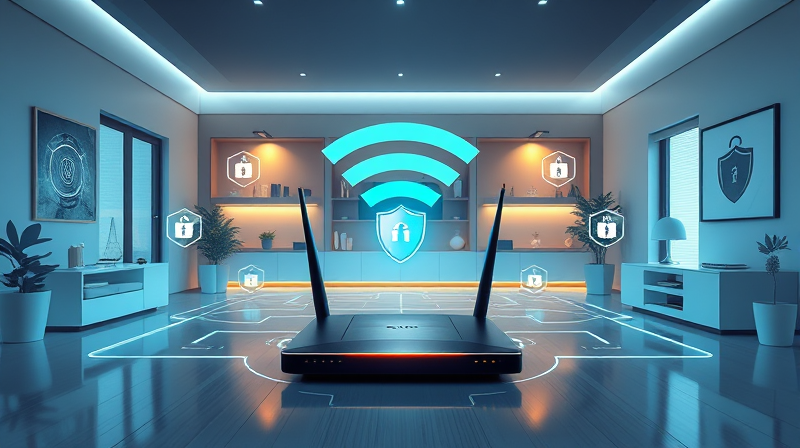In today’s connected world, a reliable and secure Wi-Fi system isn’t just a luxury—it’s a necessity. With cyber threats evolving constantly, it is imperative that you take proactive steps to safeguard your home network. Empowering yourself with these recommendations will not only protect your personal information but also ensure uninterrupted digital experiences for you and your family.
Establishing a trustworthy and robust Wi-Fi setup is a journey that requires both the right tools and the right mindset. In this article, we break down key strategies and actionable steps to help you achieve a secure network that withstands modern cyber threats, giving you peace of mind while you navigate the digital landscape.
Choosing the Foundation: Your Router
The journey to a secure Wi-Fi network begins with a high-quality router. Investing in a router that supports the latest Wi-Fi 6 standard is essential as it provides improved speed, higher capacity, and enhanced security features. If available, opt for devices that support Wi-Fi 6E, which utilizes the 6 GHz band to deliver superior performance while reducing interference.
By choosing the right router, you set a solid foundation for a network that can handle multiple devices, offer fast connectivity, and provide integrated security measures to keep intruders at bay.
Modern routers are often equipped with built-in firewalls and can be easily managed to receive automatic firmware updates, ensuring that vulnerabilities are patched promptly.
Fortify Your Network with Advanced Security Measures
When it comes to digital security, there are several critical practices that should become routine. Consider the following recommendations as necessary steps in your network maintenance routine:
- Implement Strong Encryption: Make sure your router uses the latest WPA3 encryption protocol. This offers the strongest security for your connected devices. If your devices require backward compatibility, use WPA2/WPA3 Transitional mode to maintain security while accommodating older devices.
- Unique Network Name and Password: Change the default SSID and password on your router to something distinctive and unpredictable. Use a blend of uppercase, lowercase, numbers, and special characters to thwart unauthorized access.
- Enable Firewall and Automatic Updates: Activate all built-in security features. Regular updates ensure your router is protected against new threats as soon as they emerge.
- Use a Guest Network: Segregate your primary network from devices that don’t need to access sensitive data. Creating a guest network prevents potential security breaches from affecting your main network.
- Disable Remote Management: Limit external access to your router settings unless absolutely necessary. This step mitigates risks from remote cyber intrusions.
Adopting these practices not only protects your data but also builds an awareness of the importance of digital hygiene. Each step you take contributes to forming a formidable barrier against cyber threats.
Another layer of protection can be established by enabling advanced security features such as Intrusion Detection Systems (IDS) and Intrusion Prevention Systems (IPS). These tools actively monitor your network and block suspicious activities in real time.
Moreover, leveraging a Virtual Private Network (VPN) adds another protective shield by encrypting your internet traffic. This is particularly useful when you are on public Wi-Fi networks or handling sensitive information from remote locations.
For users with deeper technical know-how, implementing network segmentation—dividing your network into smaller subnetworks—can minimize the impact of a potential breach and improve overall network performance and management.
Remember that security is not a set-it-and-forget-it task. It is an evolving process that requires regular maintenance and awareness. Perform periodic security audits by checking for unauthorized devices, revisiting security settings, and updating passwords. In this digital age, such vigilance is your best line of defense against cyber threats.
Equally important is the education of everyone who accesses your network. Ensure that all users are informed about safe online practices and the significance of not sharing passwords or accessing questionable websites. The collective responsibility each user takes will strengthen your network significantly.
Your digital safety directly impacts your real-world peace of mind. By investing time and effort in building a secure Wi-Fi system, you embrace a lifestyle that values protection, speed, and reliability. The digital tools provided today can empower you to take decisive action and establish a network that not only performs well but also fends off cyber intrusions effectively.
In conclusion, a well-secured Wi-Fi system is the backbone of modern living. Whether you are a casual browser, a remote worker, or a tech-savvy individual, the steps outlined here will help you create a network that stands strong against any cyber threat. With regular updates, a focus on security best practices, and a proactive approach to threat management, your Wi-Fi network will become an unassailable fort in the digital world.
Stay vigilant, keep learning, and always remember: your digital fortress begins with you. By adopting these recommendations, you are not just installing a network—you are building a legacy of security and trust in an ever-connected world.








